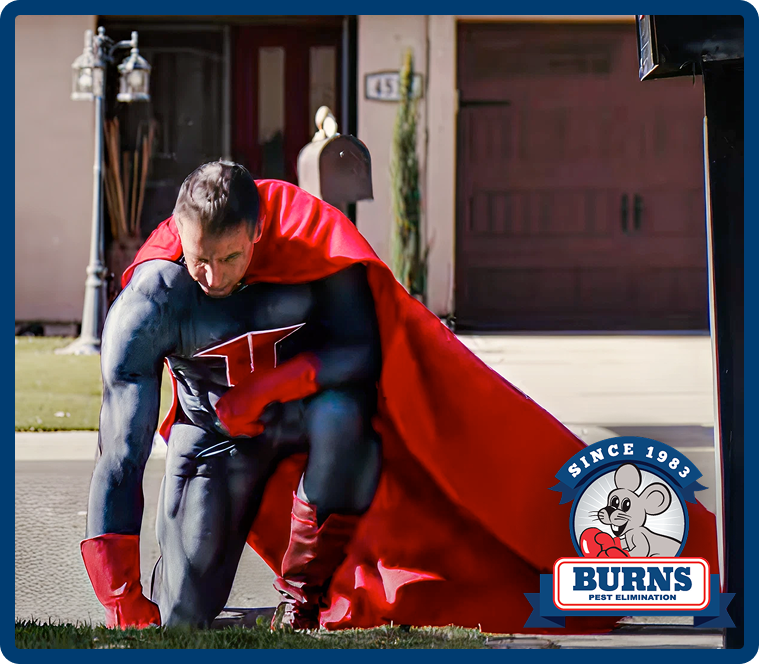





-
![]() Family Owned and Operated
Family Owned and OperatedBurns Pest Elimination has been a family-owned business and continues to operate with the Burns family as an important part of the team.
-
![]() Fast Response Times
Fast Response TimesWe recognize that your time is valuable. That’s why we strive for the quickest response times possible and arrive within a 10-minute window of your scheduled pest control appointment.
-
![]() Over 40 Years of Experience
Over 40 Years of ExperienceAs Arizona’s and Nevada’s pest control experts, our top priority is your satisfaction. With more than 40 years of experience under our belts, we commit to eliminating pests in your life.
-
![]() Professional Pest Control
Professional Pest ControlOur expert pest control technicians put our community and customers first. We continue to offer the highest quality professional work, backed by satisfaction guarantees.
Bees & Wasps
The last thing you want is to have a dangerous colony of stinging insects formed in your home or business. If you notice a nest on your property, the pest control experts at Burns Pest Elimination are here to provide you with quality tips and services that will keep you safe. Read on for more information on stinging insects.
Types of Stinging Insects in Arizona
Stinging insects are a very commonly found pest, particularly in southwestern states where the climate remains warm year-round. More than 500,000 people are sent to the emergency room every year from insect stings, and they can have a very high potency if an allergic reaction occurs. Among the many stinging insects, Arizona has a large population of:
- Africanized bees
- Bumble bees
- Carpenter bees
- Honey bees
- Wasps
- Yellowjackets
Most stinging insects do not want human interaction; however, they will often resort to stinging if they perceive danger to themselves or their colony. When this happens, stinging insects will often swarm their perceived attacker en masse, and with colonies containing thousands of members, this can be very dangerous.

Burns Pest Elimination is your ultimate pest control partner! From our expert team to our proven track record, we've got the tools and know-how to keep your home pest-free. Say hello to peace of mind. Choose Burns today!

The Burns Pest Elimination Difference
Reviews From Our Community




-
“Excellent, professional service. Karen always shows up as scheduled and sends a text when she is on the way.”- Richard W.
-
“He takes the time to explain what he’s doing and makes sure everything is taken care of. The treatments work great we’ve definitely noticed a difference. Highly recommend!”- Teeanna N.
-
“I have worked with Burns for several years. Chris in the office is super fast courteous and always does a great job with customer service.”- Dawn M.




